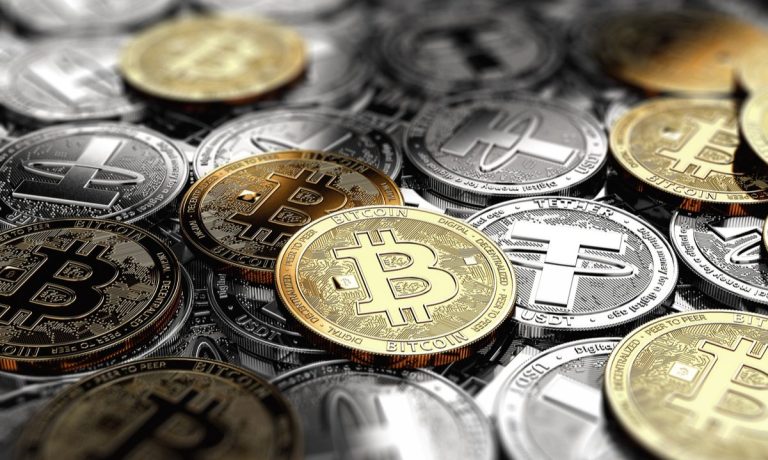
How the fast-growing number of new crypto buyers who aren’t seriously invested, emotionally and financially, will react to the market’s collapse and respond is still a big unknown, particularly as everyone who bought crypto over the last 20 months or so is underwater.
But there’s a pretty strong argument to be made that whatever happens next — and a long bear market seems likely — crypto won’t be going away.
Volatility is nothing new in the space. But when crypto first exploded on the scene, in the heady months before the last crypto winter that began in January 2018 and lasted until around October 2020, it was largely driven by a relatively small, strange market made up of a small, strange community of hardcore fans and criminals interesting in laundering money.
This time, 23% of U.S. consumers either have or had invested in cryptocurrency in the 12 months ending in April, according to PYMNTS’ U.S. Crypto Consumer study, which found that the number grew from about 41.5 million in 2021 to nearly 60 million this year.
See also: The Data Point: 23% of US Consumers Owned Cryptocurrency in 2021
Those new investors are now seeing potentially all of the gains of the crypto bull market that began in earnest in December 2020, when bitcoin passed $20,000. And it’s too soon to tell how they will react.
That $20,000 was a very important number, psychologically, for the No. 1 cryptocurrency. And bitcoin has been falling close to it for several days now. Passing it will be a body blow that may spark an even bigger selloff.
More here: Bitcoin’s Potential as ‘Digital Gold’ Loses Luster as Price Plummets
Long Since Mainstream
Meanwhile, the cryptocurrency market meltdown is big news in virtually all business publications and much of mainstream media. Analysts from many Wall Street firms and top banks are taking it seriously, not least because many sold crypto products to wealthy clients.
The blockchain technology underlying it is being used for a growing variety of payments, ranging from a can of Coke to nine-figure interbank financial instrument transactions — and pushed by the UN and governments worldwide.
Read more: Bringing Bitcoin Firmly into Payments, Strike Partners with NCR, Shopify, Blackhawk
Crypto has grown deep into the consumer’s financial mainstream. PayPal, Venmo and Cash App all offer crypto payments, while Mastercard and Visa are moving aggressively into the space with crypto debit cards that allow users to shop with digital assets virtually anywhere.
Then there are nonfungible tokens (NFTs) — a part of the industry that, while it has many potentially serious business applications, has gotten a lot of hype around overpriced collectables owned and pushed by celebrities, athletes and even some serious artists. But NFTs have also been pushed well into the public consciousness.
See here: Mastercard Partners With NFT Marketplaces for ‘Easier and Safer’ Purchases
Beyond that, the cryptocurrency industry is the subject of a government-wide regulatory push ordered by President Joe Biden and extensive quibbling in Congress. International financial bodies and regulators, from the G7 to the International Monetary Fund (IMF), have been pushing hard for broad regulation of an industry that they fear could grow to pose a threat to financial stability.
Also read: Senate Crypto Bill Debuts, and Crypto Industry Gets Big Wins
Stablecoins Under the Microscope
That’s particularly true when it comes to fiat-pegged stablecoins, the fear of which is largely behind the push in more than 100 countries to at least seriously consider creating a central bank digital currency.
Stablecoins are one of the trickiest fields of crypto, potentially offering a revolution in the payments field. While they promise the ease, speed and low cost of digital assets like bitcoin without volatility — if they are 100% fiat-backed — they have been seen as potentially so popular that they could threaten governments’ control of their own economies.
Though stablecoins are most heavily used as a way to facilitate cryptocurrency trades and in decentralized finance (DeFi) lending platforms, they are starting to be used for payments at a retail level. In February, crypto payments technology firm BitPay’s CEO Stephen Pair told PYMNTS’ Karen Webster that he was seeing the use of stablecoin at “somewhere in the neighborhood of 15% of our volume.”
Read here: Bitcoin’s Future as a Payments Tool Is Bright, Says BitPay CEO
Even so, the future of stablecoins may be in even more jeopardy than more volatile cryptocurrencies like bitcoin.
In early May, terraUSD, a stablecoin whose dollar peg was not backed by a cash reserve but by an arbitrage incentive mechanism with another cryptocurrency, LUNA, collapsed, wiping out $45 billion worth of investments in a few days. That sent shockwaves through both serious crypto investors, who use the vast majority of them, and already unfriendly regulators.
Now another, similar stablecoin, USDD, is teetering, having broken the buck by two cents for several days now. If it collapses in a run as well, that could not only strengthen the hand of stablecoin opponents, but lead newer users interested in using them for payments outside the crypto investing world running back to other popular cryptocurrencies that, while they might go down in value, largely won’t collapse overnight.
Sign up here for daily updates on all of PYMNTS’ crypto coverage.